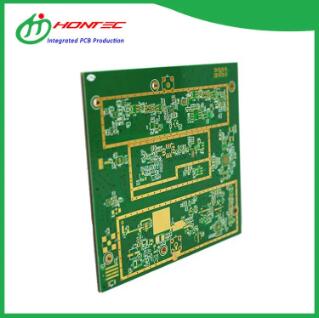Understanding the Impact of Layer Thickness in Multilayer Boards on Performance
2024-07-24
Introduction
Multilayer boards are an essential component in modern electronics, providing complex and compact circuit designs. One crucial aspect that influences the performance of these boards is the thickness of each layer. This blog will explore how varying the thickness of each layer impacts the overall performance of a multilayer board, covering aspects such as signal integrity, thermal management, and mechanical stability.
What is a Multilayer Board?
Multilayer boards are printed circuit boards (PCBs) consisting of multiple layers of conductive material separated by insulating layers. These layers are laminated together to form a single, compact structure that can support more complex and higher-density circuit designs compared to single or double-layer boards.
The Importance of Layer Thickness
The thickness of each layer in a multilayer board is a critical design parameter that can significantly affect the board's performance. Here are some key areas where layer thickness plays a pivotal role:
1. Signal Integrity
1. Impedance Control
The thickness of the conductive layers and the dielectric layers between them directly influences the impedance of the traces. Proper impedance control is essential for maintaining signal integrity, especially in high-frequency applications. Variations in layer thickness can lead to impedance mismatches, causing signal reflections and losses.
2. Crosstalk Reduction
Thicker dielectric layers can help reduce crosstalk between adjacent signal layers by increasing the distance between them. This is particularly important in high-speed circuits where crosstalk can degrade signal quality and lead to data errors.
2. Thermal Management
1. Heat Dissipation
The thickness of the conductive layers affects the board's ability to dissipate heat. Thicker copper layers can conduct heat more efficiently, helping to manage the thermal load in high-power applications. This prevents overheating and ensures the reliable operation of the electronic components.
2. Thermal Expansion
Different materials expand at different rates when exposed to heat. The thickness and material composition of each layer can influence the overall thermal expansion characteristics of the board. Properly managing these characteristics is crucial to prevent warping or delamination of the board during thermal cycling.
3. Mechanical Stability
1. Board Rigidity
The thickness of the insulating and conductive layers contributes to the overall mechanical strength and rigidity of the board. Thicker layers can enhance the board's structural integrity, making it more resistant to bending and mechanical stress.
2. Flexibility
In applications where flexibility is required, such as in flexible PCBs, thinner layers are preferred. The thickness of each layer needs to be optimized to achieve the desired balance between flexibility and mechanical stability.
Design Considerations for Layer Thickness
When designing a multilayer board, several factors must be considered to determine the optimal thickness of each layer:
1. Application Requirements
The intended application of the board dictates the performance characteristics needed. High-frequency circuits may require precise impedance control, while power electronics may prioritize thermal management.
2. Material Selection
Different materials have varying thermal, electrical, and mechanical properties. Selecting the appropriate materials and layer thicknesses can help achieve the desired performance while maintaining reliability.
3. Manufacturing Constraints
The manufacturing process can impose limitations on the achievable layer thicknesses. Designers must work within these constraints to ensure the board can be produced reliably and cost-effectively.
4. Cost Considerations
Thicker layers often increase the cost of the board due to the additional material and processing required. Designers must balance performance requirements with budget constraints to deliver an optimal solution.
Conclusion
The thickness of each layer in a multilayer board has a profound impact on its overall performance. From signal integrity to thermal management and mechanical stability, careful consideration of layer thickness is essential for designing high-performance PCBs. By understanding the role of layer thickness and optimizing it for specific applications, designers can create reliable and efficient multilayer boards that meet the demands of modern electronics.



